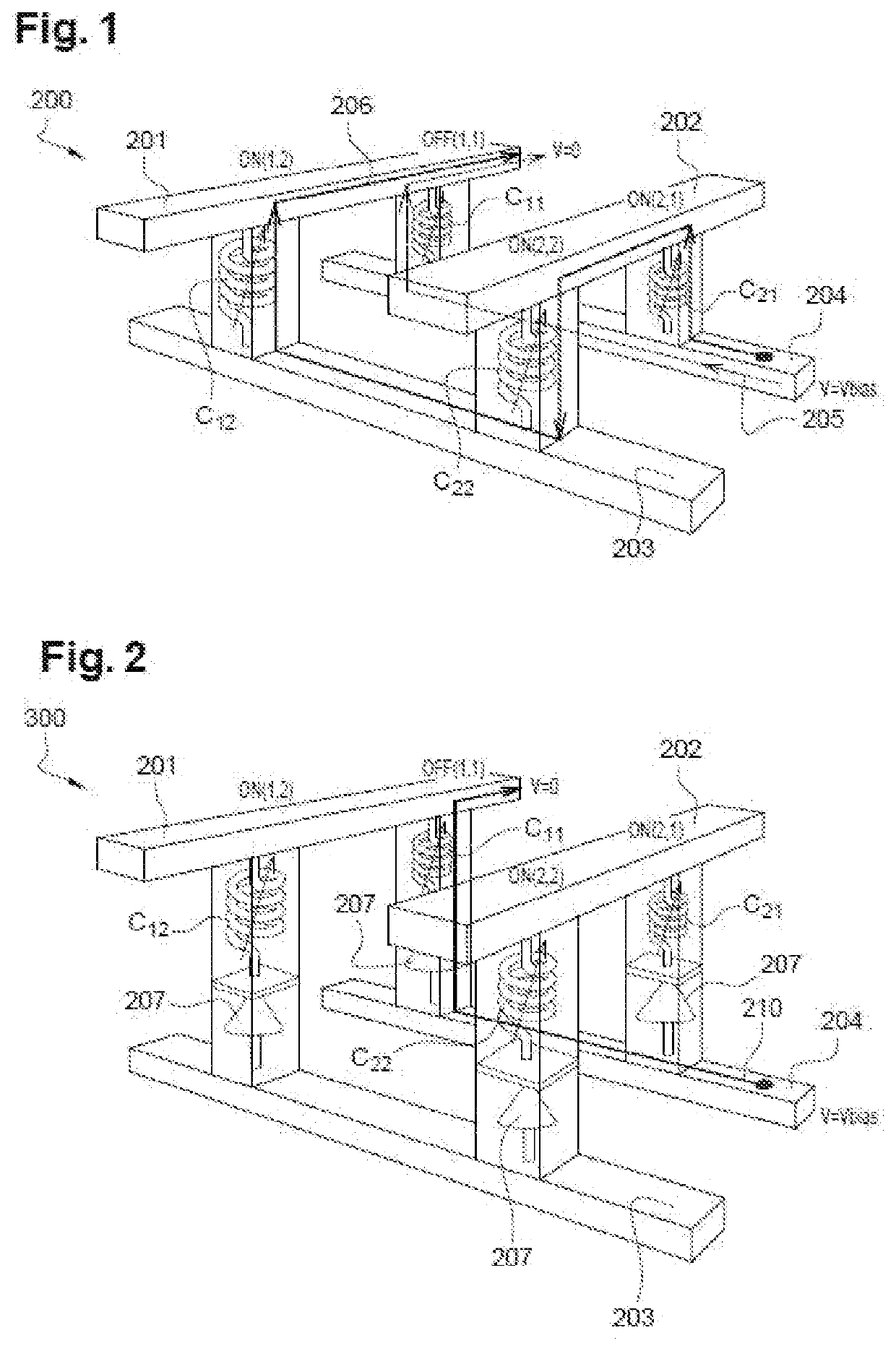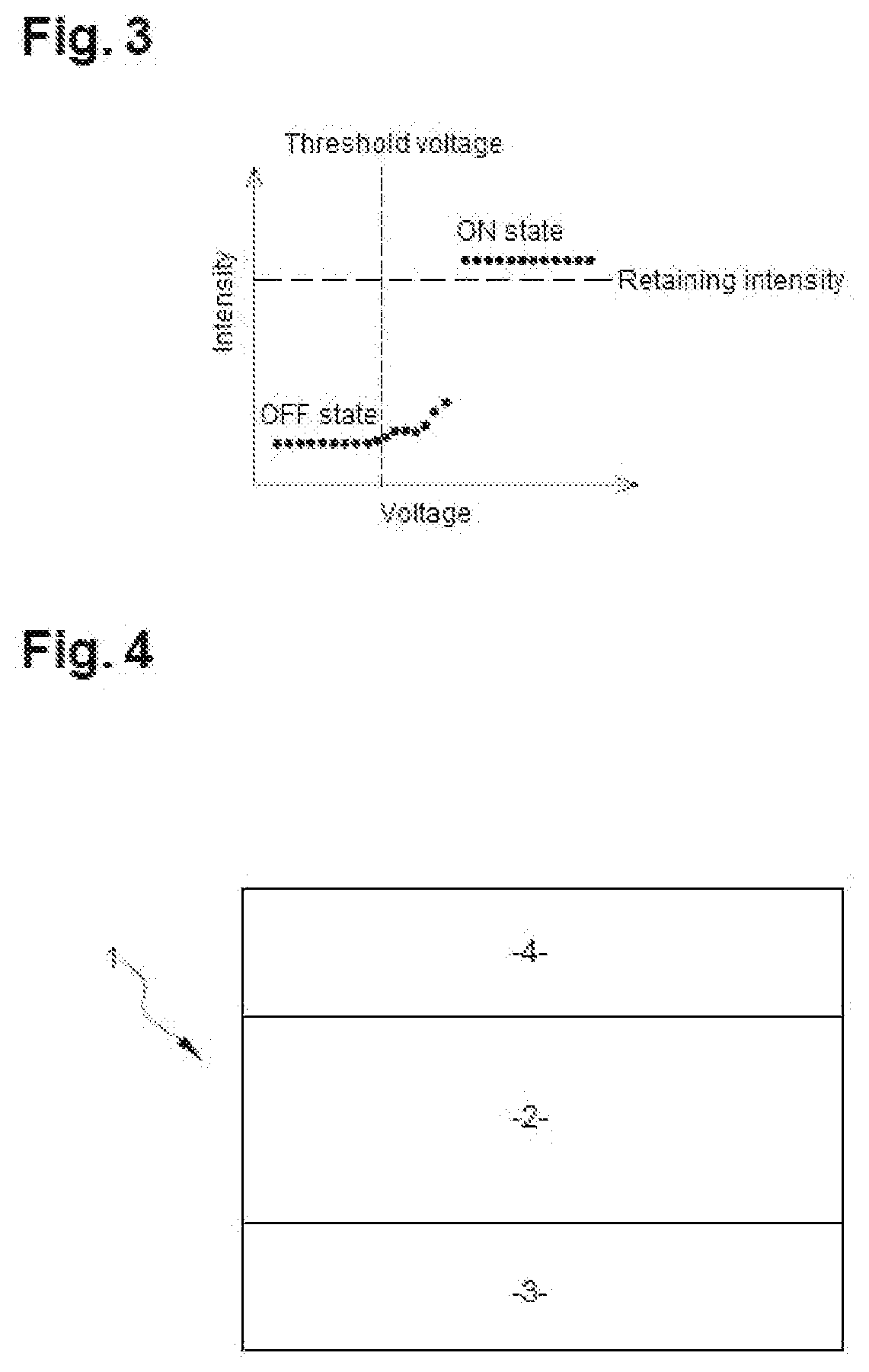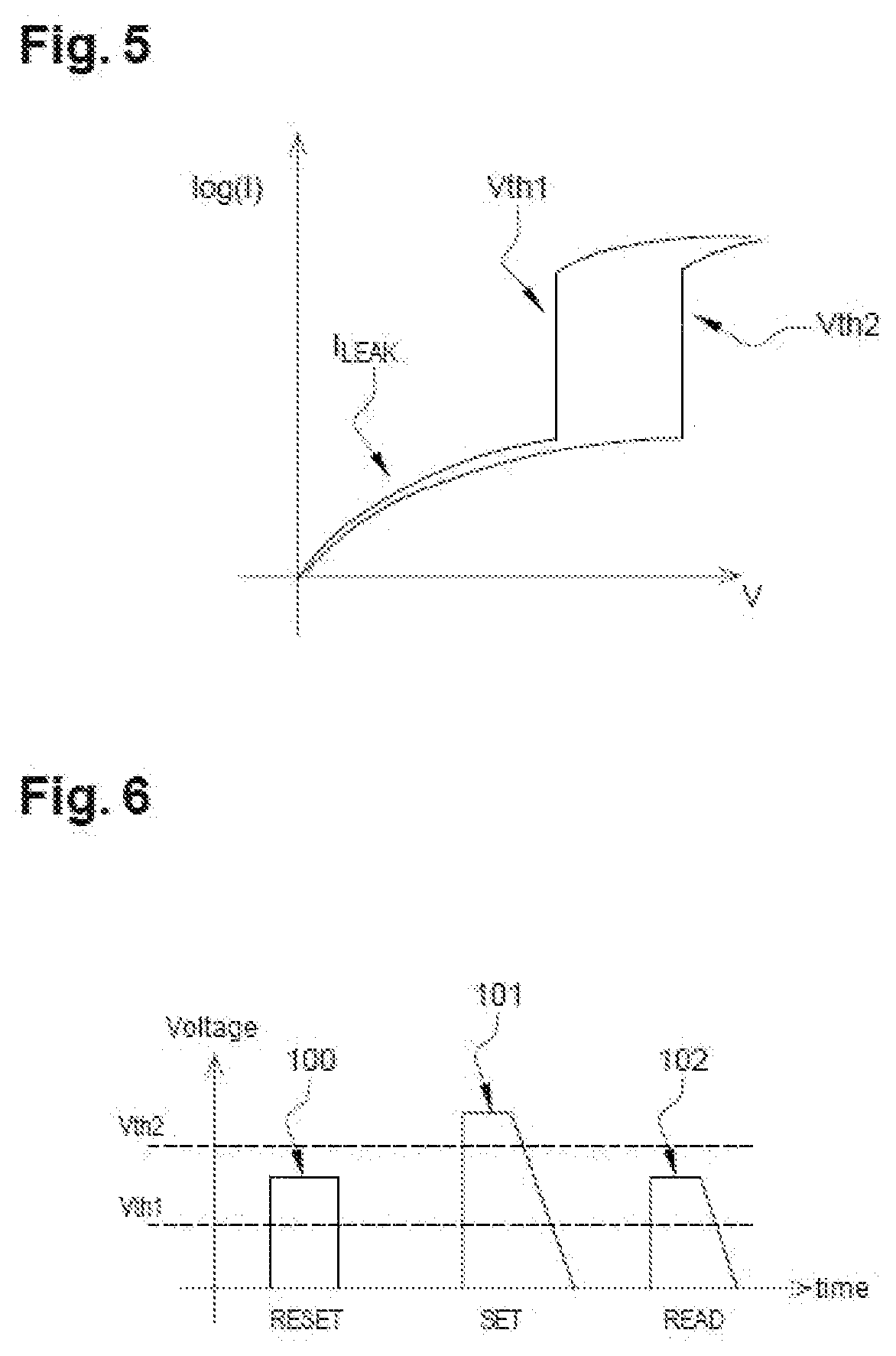Selective non-volatile memory device and associated reading method
a non-volatile memory and associated reading technology, applied in the direction of information storage, static storage, digital storage, etc., can solve the problems of reducing the retention duration of information, reducing the reading signal, and not having the characteristics required of the type of memory
- Summary
- Abstract
- Description
- Claims
- Application Information
AI Technical Summary
Benefits of technology
Problems solved by technology
Method used
Image
Examples
Embodiment Construction
[0065]Unless mentioned otherwise, the same element that appears on different figures has a unique reference.
[0066][FIG. 1] has already been described in reference to the prior art.
[0067][FIG. 2] has already been described in reference to the prior art.
[0068][FIG. 3] has already been described in reference to the prior art.
[0069][FIG. 4] shows a diagrammatical representation of a device 1 according to a first aspect of the invention.
[0070][FIG. 5] shows the change in the current on a logarithmic scale passing through the device of FIG. 4 according to the voltage applied between its bottom and top electrodes.
[0071][FIG. 6] diagrammatically shows examples of programming and reading pulses making it possible to use the device of FIG. 4 as memory.
[0072][FIG. 7] shows the behaviour of the voltage threshold according to the slope of the descending flank of the programming pulse for three materials of the active layer of the device of FIG. 4.
[0073][FIG. 8] shows the behaviour of the sub-thr...
PUM
 Login to View More
Login to View More Abstract
Description
Claims
Application Information
 Login to View More
Login to View More - R&D
- Intellectual Property
- Life Sciences
- Materials
- Tech Scout
- Unparalleled Data Quality
- Higher Quality Content
- 60% Fewer Hallucinations
Browse by: Latest US Patents, China's latest patents, Technical Efficacy Thesaurus, Application Domain, Technology Topic, Popular Technical Reports.
© 2025 PatSnap. All rights reserved.Legal|Privacy policy|Modern Slavery Act Transparency Statement|Sitemap|About US| Contact US: help@patsnap.com



